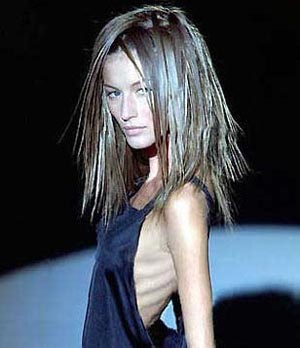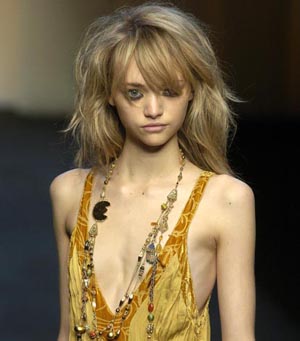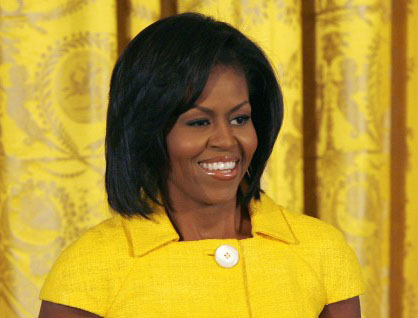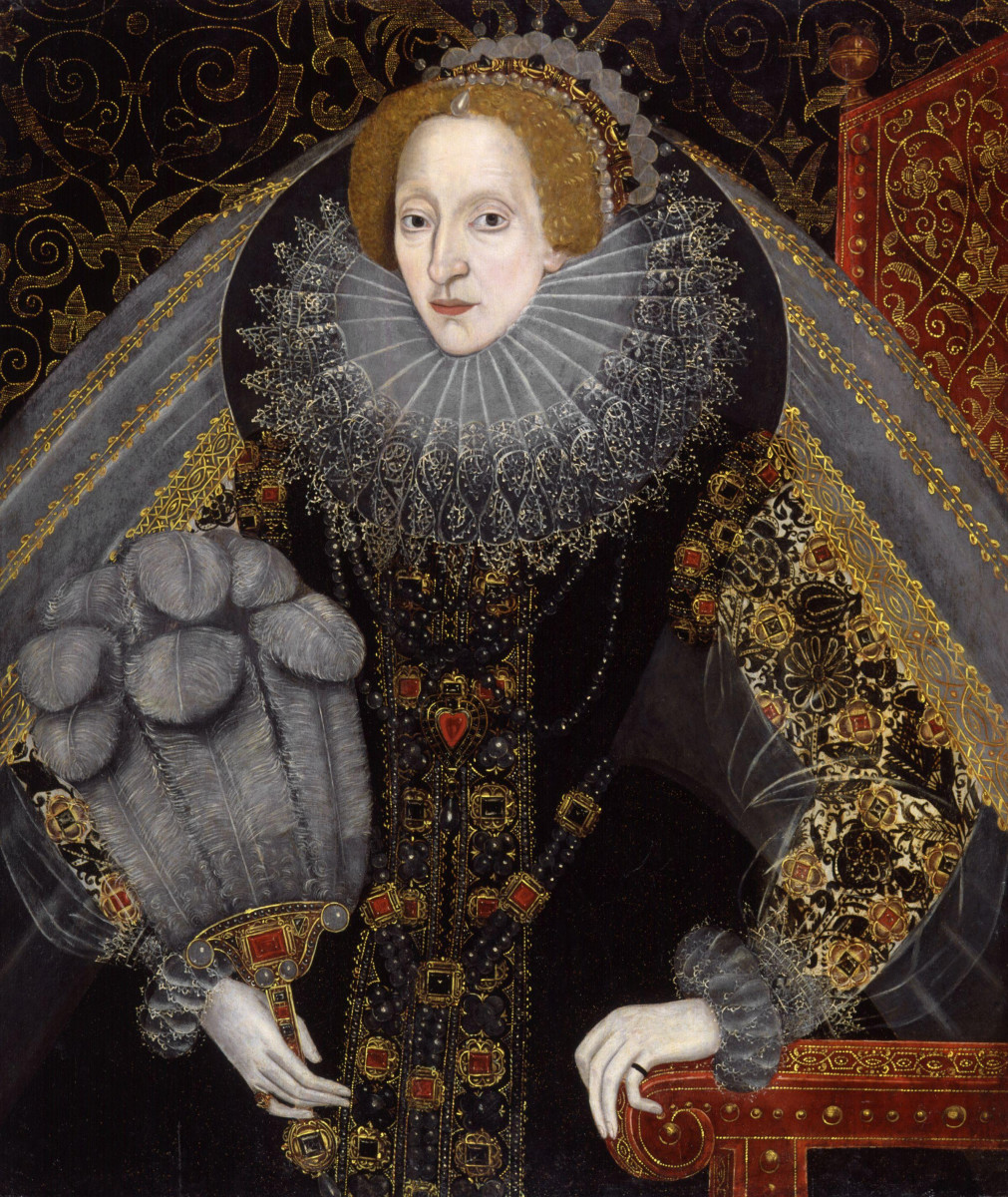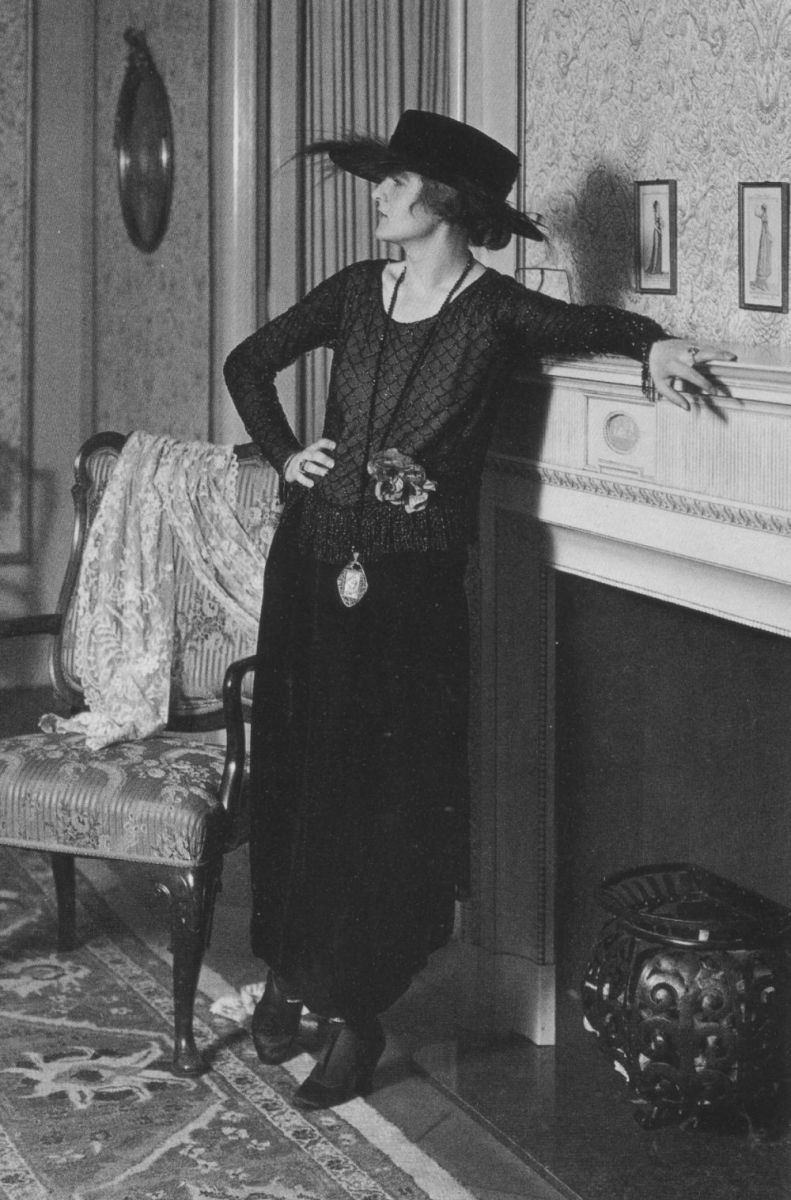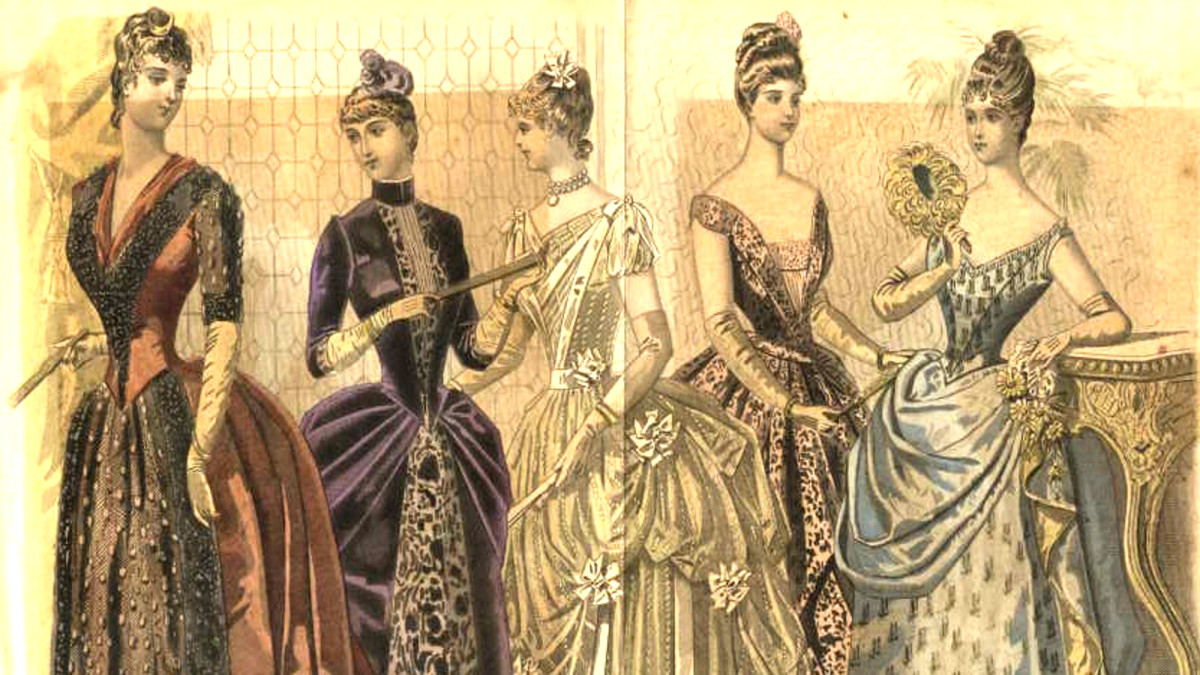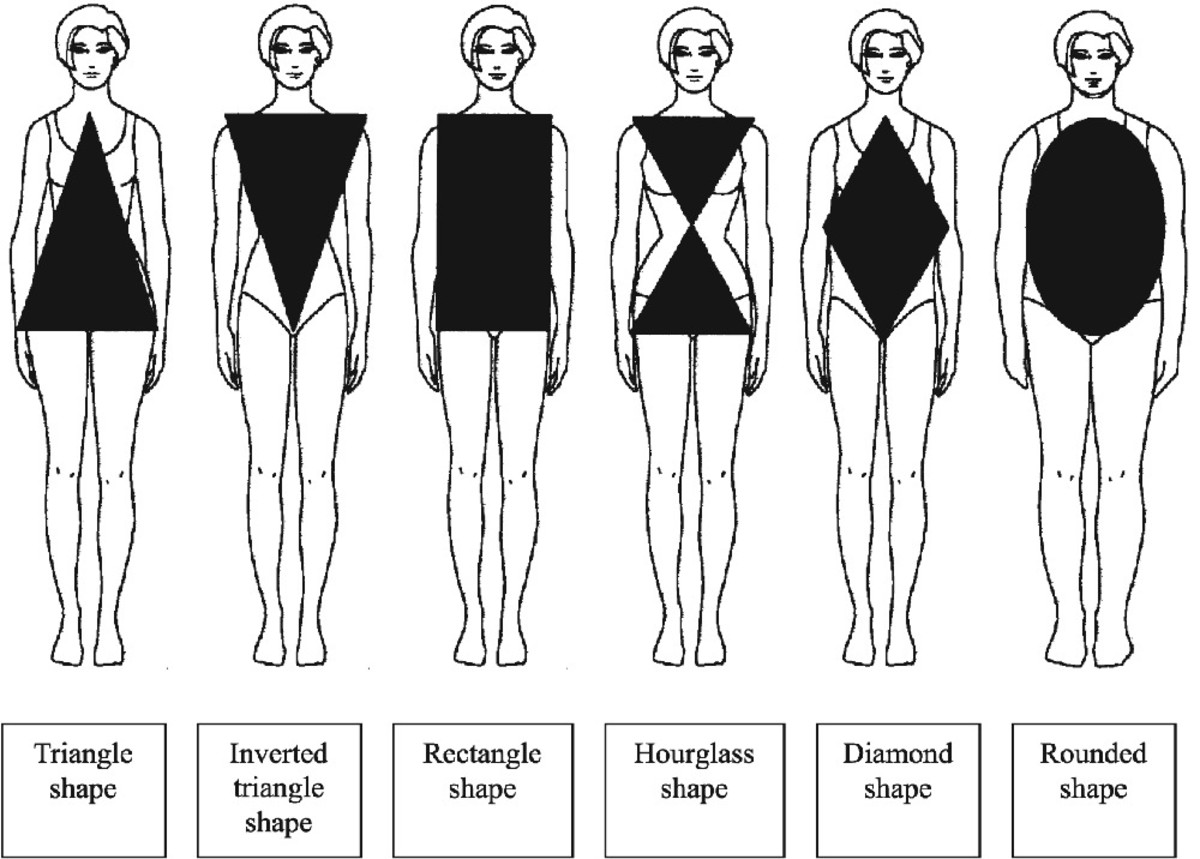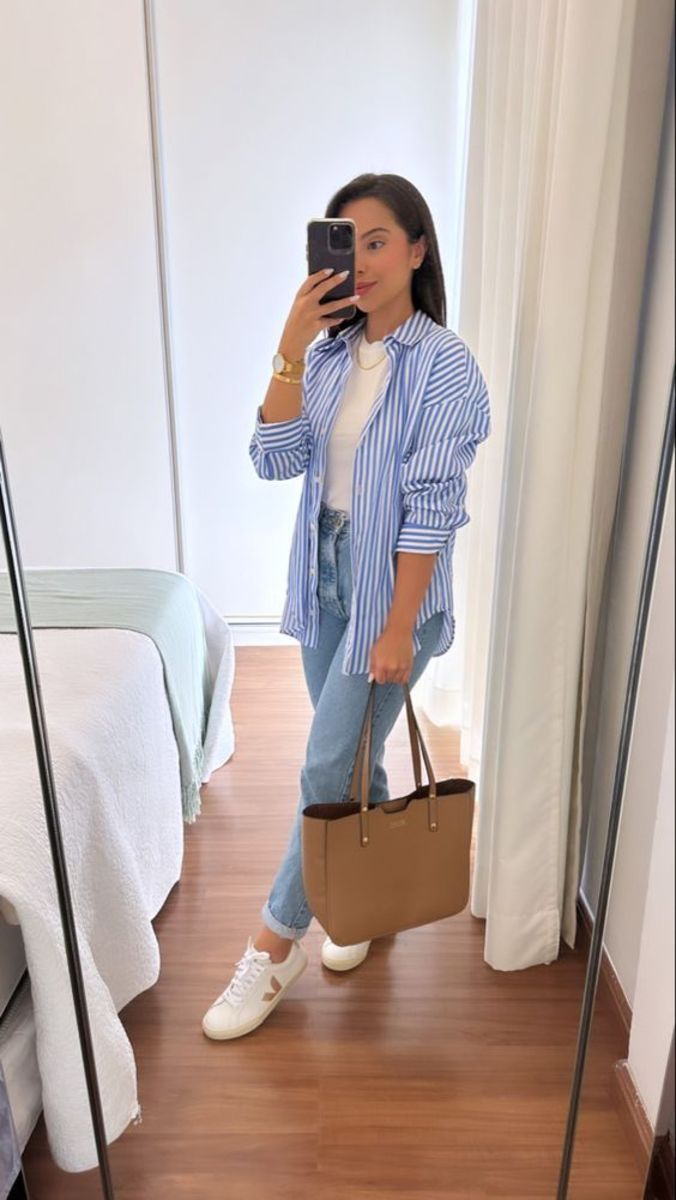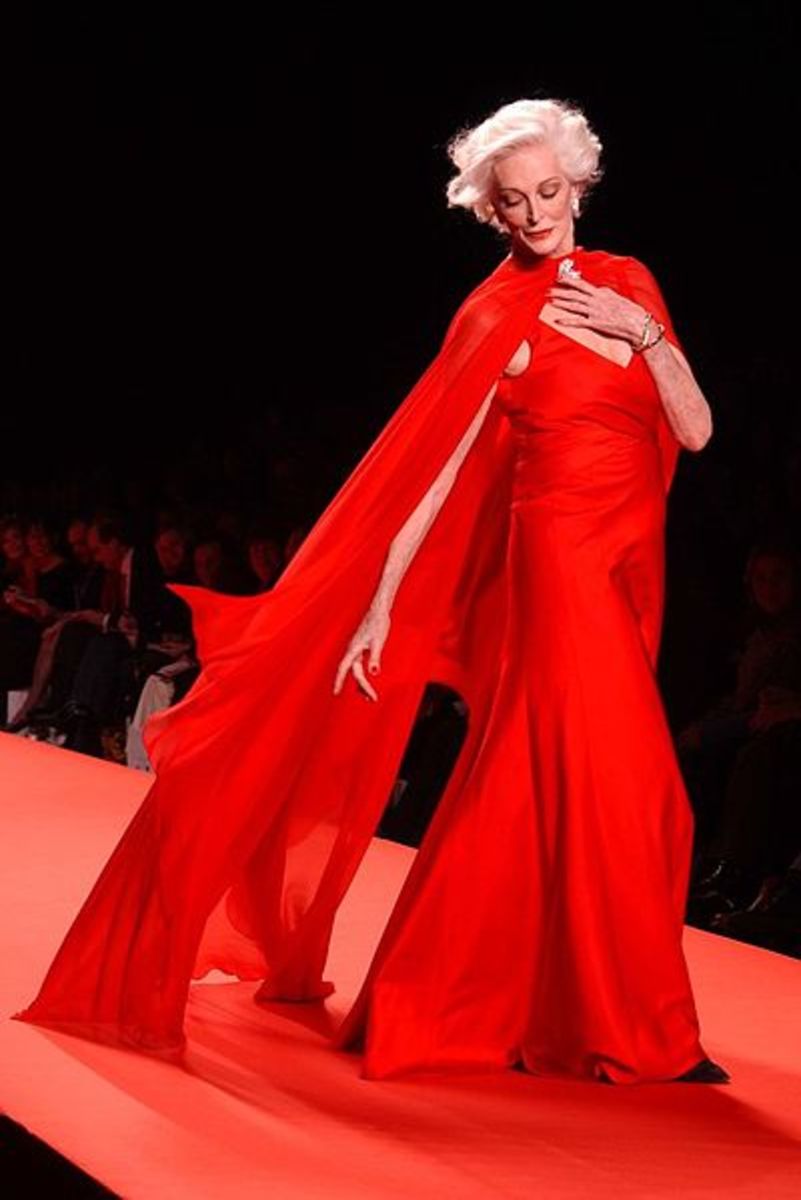Fashion And Politics:Sarah Palin To Scarlett Ohara
The Politics of the Female Figure
We all know that fashion is an ever changing and evolving phenomenon. And yet there is much more to it than simply the whims of what the fashion world decides is "in" one day and "out" the next. The garments that are fashionable not only define what a woman should wear, but also what shape her body should take, and indeed, what her position should be in society as a whole. The clothing that is promoted in any given era is inextricably linked to the role and status of women at that moment in time. This is a window into the politics of the female figure.
It is odd to think about it, but different parts of the female body can be in or out of style. Strange, when you consider that women of every era have the same basic anatomy. But slaves to fashion that women have always been (and the men, too, in certain periods of history), they have done their best to adapt their physical form to meet the standards of the day. The ideal female form throughout history has not only been dictated by the ideas of fashion designers or fashion magazines; rather it is very much linked to political and societal conditions of the day.
Tighter! Tighter!
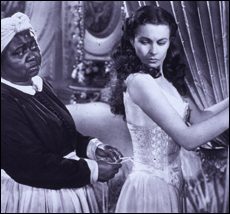
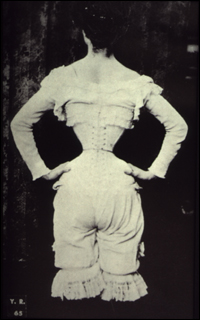
How About The Smallest Waist In Three Counties
If you have ever seen the movie Gone With the Wind, you surely remember that classic scene in the beginning when Scarlett O'Hara is dressing to go to a party. She holds tightly to the bed post while Mammy pulls her corset, yelling "Tighter!". One of the first points made in Margaret Mitchell's book is that the desirable Miss O'Hara had a 17 inch waist, the smallest in three counties. The novel was written in 1936, but it offers the perfect illustration of just how important a tiny waist was in the antebellum period. When one of the things for which a young lady is most prized is the size of her waist, it clearly illustrates how the women of the era were supposed to be decorative, first and foremost.
Why Can't I Breathe
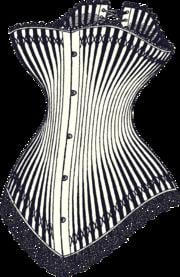
Victorian Fashion Reflects Social Status
In the Victorian period, the way a woman dressed was intended to show the wealth and status of her husband. And indeed, it was entirely the husband's wealth; prior to 1882 in England, for example, a wife did not even retain ownership of property she inherited. The 1870 Married Women's Property Act allowed a wife to keep her own earned wages, but of course no proper society woman would have dreamed of having a wage earning job. In the Victorian era, the wife was entirely dependant on the husband, and this was exactly what society deemed correct and moral. A woman's sphere was severely limited, with her domain being the home, and the world outside the garden gate belonging to men. In the new Industrial world, it was the chief duty of the wife to maintain a secure cocoon to which her husband could retreat after a hard day of business.
The fashion of the day reinforced this. The restrictive corsets worn by Victorian ladies made strenuous labor all but impossible (it should be noted that working class women who had no choice but to work hard would have worn less tightly laced undergarments). The women were seen as delicate and frail flowers who required the protection of men, and the limitations created by their clothing ensured that this was often the case. It is likely that the stereotypical Victorian ailments such as swooning and "the vapors" were caused by the corsets that were required to maintain an ideal silhouette. Tight lacing has been linked to breathing, circulatory, and digestive difficulties.
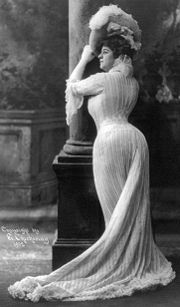
Bust Forward - Bottom Back
Freedom of movement was further impeded by the skirts that were popular in the mid-to-late 18th Century. In the early part of the period, the full skirts supported by massive hoops and crinolines were all the rage. Later, the skirts became narrower in the front, with a bustle in the back that exaggerated the look of the derrière. The hoop skirts presented one sort of challenge to mobility, and the slimmer skirts created a new set of problems. Eventually the chic skirt became so narrow in the front that the wearer's ability to take normal strides was limited. Of course, this fit right in with the limited role in society that was the standard in Victorian times.
Styles change, and so does the desired female physique. By the Edwardian period corsets changed to emphasize an "S" shape, in which the bust was thrust forward, and the bottom was pushed back. This highly stylized shape caused such constriction to the waist that a woman's organs could actually be relocated within her abdomen. The ideal was a handspan waist. This incredibly restrictive garment coincided in England with a period of an extremely rigid separation between the classes and with the Gilded Age in America, a time which saw the rise of the super wealthy industrialists. The shape into which upper class women were expected to mold themselves would have been a clear indicator of their status as members of the leisure class. In addition, this intricate type of dressing would have required assistance, meaning not only that the woman needed a personal servant, but also that she was essentially being kept in a situation where she was unable to complete the most basic task of dressing herself.
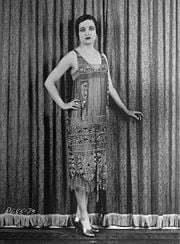
The Flapper Is Woman Unbound
World War I saw a drastic shift in the role of women in society. Women could no longer be contained in their homes, and as they ventured out into the world, they also left the most restrictive forms of corsets behind. This led to the changes in fashion and indeed the world that were to lead to the rise of the flappers of the 1920s. Other forces were at play as well, such as the post-war emergence of the fashion designer Coco Chanel, who believed that corsets were an abomination that held women back. She designed boxier garments that required no tight undergarments and used fabrics like knits which gave women a freedom of movement that they had never enjoyed before. Chanel and others promoted a sporty attitude and way of life that included activities such as tennis and sunbathing. Previously, a porcelain complexion was prized, as it was only achievable by those who were wealthy enough to avoid all labor in the sun, but this changed, and a suntan became the new symbol of the leisure class.
The 1920s were a time of dramatic change in society, and fashion mirrored that perfectly in the form of the flappers. Whereas in the Edwardian era, it was a mature and womanly figure that was valued, the 1920s saw the rise of a youth movement, and the shape du jour was boyish and boxy. Hips were out, breasts were out, and the waist was nowhere to be seen under the drop-waist shifts of the flappers. Women were rebelling by dancing in speakeasies, smoking in public, cutting their hair, and showing their knees. The Roaring 20s were a time of tremendous social upheaval, not entirely unlike the "Youthquake" of the 1960s. The flappers were freed from the physical constraints of their clothing, and they were also released from the gilded cages that held Victorian and Edwardian women prisoners in their own well-appointed homes.
Rosie The Riveter
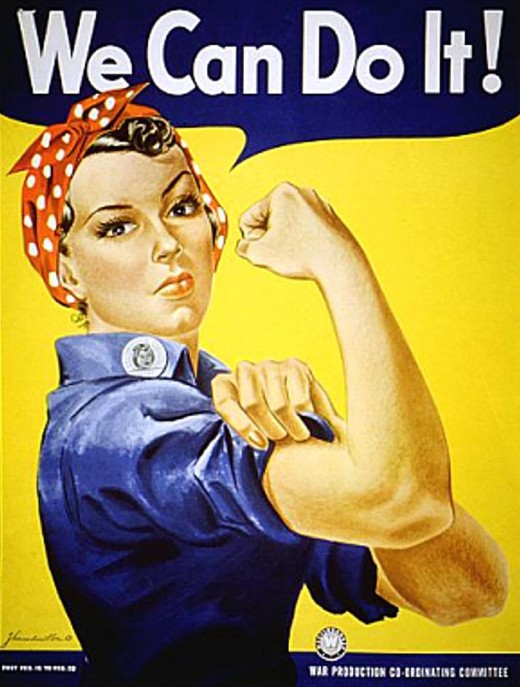
Depression and War--Women Are Stronger in Spirit and Looks
The stock market crash of 1929 brought an abrupt end to the fun and frivolity of the Jazz Age and ushered in a more serious attitude, which was only magnified by the start of World War II. During that terrible war, something as lighthearted as fashion was considered to be unimportant; yet women still needed something to wear, so there were trends in that time as in any other. Rationing of materials had a big effect on what type of clothing could be produced. It was forbidden to make clothing with features such as pleats, draping, or fanciful embroidery that wasted materials. Even turnback cuffs were banned, and by war's end in Britain, there was a limit on how many buttons could be on a jacket.
Something else had a strong influence on clothing and the female form of the World War II era. With the men away at war, women entered the workforce like never before. They were doing hard jobs, manual ones that would have been deemed an impossibility for their "frail" sisters of the Victorian era. As women went to work in factories to make munitions and other vital war materials, they wore trousers and pulled their hair back in scarves or snoods because they did not have time to fuss with it. This trickled down into the rest of fashion, in the form of much more masculine shapes than had ever been seen before in women's clothing. The strongest point of emphasis was not on a tiny waist or an exaggerated derrière, but on a strong and powerful shoulder, made possible by the use of shoulder pads in everything from blouses to dresses to coats. Interestingly enough, in the 1980s, when women were demanding to be treated as equals in the corporate world, the strong shoulder came back into style, in the form of the power suit.
June Cleaver - American 1950's Icon
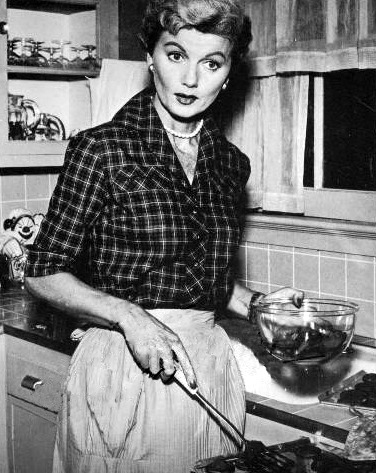
Men Come Home - Rosie Turns Into June Cleaver
At the end of World War II, Europe was devastated, and needed a break from the sacrifice and austerity of the war years. Enter Christian Dior with the New Look, which debuted to both much excitement and much derision in 1947. The full skirted, narrow waisted dresses that took yards and yards of fabric to create were the antithesis of the restrained and sober wartime fashions, and women ate them up. The New Look also signalled a return to the hourglass silhouette, with all of the social implications wrapped up in that physique.
The revival of a cinched in waist and a flouncy skirt with a crinoline indicated yet another sea change in women's role in society. As men returned home from World War II, they wanted their old jobs back, and they wanted their wives back in the house. The powerful woman that helped drive the war effort was told to go home and bake a pie or make a meatloaf. Rosie the Riveter was gone, replaced by June Cleaver vacuuming her living room in a perfect strand of pearls and a pair of high heels. The return to an ultra-feminine hourglass shape went hand in hand with what was happening in society as a whole.
The 1950s were a time when society expected everything to be as perfect and uniform on the surface as possible. It was the era that gave birth to suburb after suburb with row upon row of identical houses. Ladies with their perfectly coiffed hairdos (there was a huge explosion in the number of beauty parlors in the 50s) kept immaculate homes while wearing their equally pristine and polite dresses. The emphasis was on a small waist, shown off by either a full circle skirt or a narrow pencil skirt. Bustiers, waist cinchers, and girdles became de riguer as the underpinnings to achieving the ideal hourglass figure. In addition to this ideal conforming with societal expectations that women should focus on being wives and homemakers, there was another reason for the emphasis of "Happy Days" and a reassuring sameness. The cheerful tone of the prosperous post-WW II era in the United States tried to mask an undercurrent of anxiety caused by the Cold War and the fear of a nuclear war.
Burn Baby Burn
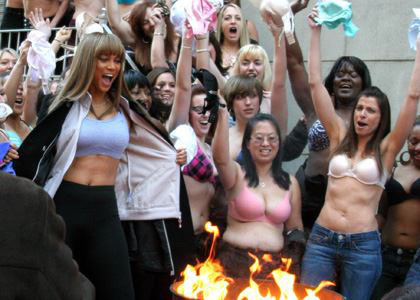
1960's and 70's Free At last Chavinist Pigs Become Endangered Species
In the 1960s, there was yet another shift in both fashion and women's place in the world. The hourglass silhouette faded from prominence in favor of a revival of the boyish shape that was popular in the youth driven culture of the Roaring 20s. Not only was a prepubescent figure the new ideal, but women were demanding equal rights as never before, and just like in the 1920s, hemlines rose dramatically. Girdles, corsets, and other restrictive garments were out, and a simple slip with a built in bra was all the modern girl needed under her minidress. The bra burnings of the 1960s were mostly symbolic (few bras were actually set on fire), but they carried with them a potent message of liberation, not only from restrictive underwear, but more importantly, from the imposition of any societal restraints or limitations,especially those imposed by men and a patriarchal society.
In more recent times, the female figure and the fashions of the day have continued to march hand in hand with politics and the world at large. The women's movement and sexual liberation of the 1970s saw plenty of unfettered body parts, whether it was under the Earth Mother's loose maxi dress or the disco queen's spangly tube top. As in the 1920s, women were demonstrating their new freedoms by choosing clothing that allowed for easy movement and the pursuit of their own version of happiness.
Constant Change From Glamor And Curves To Very Thin
The 1980s were a time in which glamor was king, and exaggerated shapes were the norm. Women trying to climb the corporate ladder sought to de-emphasize their femininity under power suits with heavy shoulder pads. Society ladies danced the night away at glittering charity functions in gowns with huge bubble pouf skirts or giant puffy sleeves. The excesses in fashion mirrored the spirit of the go-go 1980s perfectly.
The ideal female figure continues to echo what is happening in contemporary society. As Americans have grown larger and larger on average, the ideal form presented by the influential worlds of fashion, movies, television, and the rest of the media have grown thinner and thinner. The healthy, curvy, sporty supermodels like Christy Brinkley and Cindy Crawford of the 1980s and early 1990s gave way to the waif model era that was ushered in by the rise of Kate Moss. Moss, whose ultra-thin and straight figure was a startling contrast to the more curvaceous figures of the models who had dominated the fashion world was at first shocking, but then widely imitated as the body type to have.
Anorexia Is In
The new ultra-thin feminine ideal has been a cause of great controversy. Unlike the women before them, the models and celebrities that emulate this new shape cannot achieve it by the use of elaborate undergarments. This has caused a great deal of concern among many that holding up this type of physique as a goal causes anorexia and other unhealthy behaviors. As a nation, we have become obsessed with every inch and pound gained or lost by celebrities, all as the general public gets heavier, and the obesity epidemic grows. In an effort to cut back on the unnaturally thin figure that has been promoted by the fashion industry, in 2006 Spain made a rule banning any model from runway shows whose body mass index puts her in the underweight category, and there is a push by eating disorder advocates for all nations to adopt similar standards.
Famine Made Chic
Click thumbnail to view full-size

Top of Fashion And Politics
Click thumbnail to view full-size

Two prominent women on different side of the political spectrum have also been high profile figures in the fashion pages.Michelle Obama's fashion sense receives constant praise while Sarah Palin is derided for her equally attractive dress. Michelle as first lady plays a supporting role to the most powerful man in America,Sarah Palin challenges the most powerful men in America. It seems that a woman will either be praised or criticized for being fashionable depending on her political status.
It appears that a woman will still be expected to dress according to her status. An intriguing question is whether Sarah Palin gives the greatest heartburn to the political or the fashion establishment.

